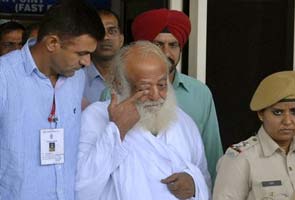
The 75-year-old guru was arrested on Saturday night at his ashram in Madhya Pradesh and taken back to Jodhpur, where he is accused of having sexually assaulted a 16-year-old on August 15.
"It has been proved that everyone is equal in the eyes of the law," said assistant Advocate General Anand Purohit, who had opposed Asaram Bapu's bail on behalf of the Rajasthan police.
The police say that his supporters have threatened officers handling the case, and tried to bribe the cops who had shown up to arrest him.
In court today, the police said that AP Lamba, who is leading the investigation, received a threatening letter on Tuesday. The letter was allegedly faxed from Uttar Pradesh.
Deputy Commissioner of Police Lamba had said that the police had sufficient evidence to prove the guru is guilty.
The police say Asaram Bapu had "lied" about being unwell, first to evade arrest, and then to request bail. The cops also said he had cleared a "potency test", indicating he is capable of sexual assault.
The religious preacher has denied the allegations and says he never spent any time alone with the teen complainant. He told the police he met her and her family as part of a large gathering that came for his 'satsang' or discourse.





Comments
Add new comment